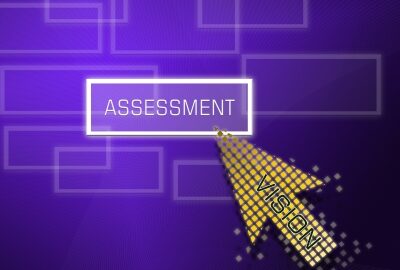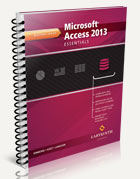By Eric Weinstein, author of Labyrinth Learning’s Excel for Accounting and Payroll Accounting


By Eric Weinstein, author of Labyrinth Learning’s Excel for Accounting and Payroll Accounting

By Alec Fehl, author of Labyrinth Learning’s Microsoft® PowerPoint® 2016 Essentials and Your Digital Foundation Continue reading Let Your Students Have a Do-Over


These days, many students are connected to the Internet and to technology nearly 24 hours per day through their smartphones. The use of this technology is changing the way students learn and the way instructors need to think of digital literacy testing for students.
It’s common for instructors to assume that because many of today’s students have grown up with technology, they are naturally digitally literate. However, this is not always the case. Just because students are immersed in technology doesn’t necessarily mean they know how to use it effectively. In order to enhance education, instructors should identify skills to enhance students’ use of their devices. They should also focus on teaching the benefits, dangers, and opportunities that come with today’s technology.
Digital literacy testing for students often indicates that they need help learning to use their devices to enhance learning. To raise digital literacy, instructors could teach:
Teaching technology has moved away from teaching students how to turn on and navigate their devices and on to more detailed, specific topics that allow students to make the most of technology and use it responsibly.
We are committed to helping students learn and instructors teach. Our team invites you to contact us at Labyrinth Learning to learn more about our software.


When most instructors think about assessing student learning, what often comes to mind are tests, quizzes, and assignments. While these are certainly useful tools for motivating students to learn the material and for assessing student learning, there is another method to consider integrating into your approach.
Students generally begin a course with very little knowledge of a topic. They’re aware of the fact that they know very little. When the course has finished, they’re much more knowledgeable, but it’s hard to determine exactly how much they have learned — or which topics they learned well, and which are still unclear.
One way of assessing student learning is to ask a series of questions early in the course, and then repeat that same series of questions at the end of the course. By comparing the before-class and after-class answers, you can determine exactly which topics students learned well and which are still foggy.
To implement this method, you’ll need to start by outlining the key concepts of your course. Ask several big-picture questions about each topic that you feel will effectively evaluate whether a student understands that topic. Administer this assessment at one of the first classes, and again at one of the last. You could also choose to use this approach on a topic-by-topic basis. Ask a series of questions before each unit and again after each unit.
For more information regarding our student learning solutions, we invite you to contact us at Labyrinth Learning today.


The transition from student to professional life is one that many young adults find difficult. By helping students learn to be professional, you as an instructor can help ease this transition. If your students at least know how to act and work in a professional setting, adapting to the other changes that come with the transition from college to working life will be easier.
Many instructors assume they are helping students learn to be professional by setting deadlines for assignments, setting attendance policies and including group projects in the curriculum. However, there seems to be a disconnect. Students do not always realize that these policies are in place in order to prepare them for working in professional settings. They assume that the challenge of working with non-contributing individuals on a group projects is unique to school, when it will really prepare them for when the same situation arises at work.
The secret to helping students learn to be professional is sharing your reasons behind your policies:
We offer software solutions to prepare your students for the workforce. Contact us at Labyrinth Learning to learn more about our products and how they can help simplify the experiences of teaching and learning.


In order to get the most out of their education, students need to be able to learn efficiently and in a way that encourages them to retain the material, rather than simply forget it once the test is over. Understanding some common misconceptions that students have about learning will assist you in designing a curriculum and teaching style that fights these misconceptions and results in well-educated, prepared students.
Misconception #1: Knowledge is just a slew of facts.
A common student misconception about learning is that building knowledge is about learning more facts. In reality, knowledge is being able to tie these facts together, see how they relate, and understand their deeper meanings. Making sure you explain how individual concepts are related to one another will help break through this misconception.
Misconception #2: Natural talent, not hard work, makes someone good at a subject.
Provide your students with feedback throughout the semester, letting them know that their work is paying off and that they’re improving. They’re not just naturally talented; they’ve been putting forth effort to succeed.
Misconception #3: You can learn effectively while multitasking.
This common student misconception about learning is quite detrimental. Student think they learn well while also doing other things. Set policies, such as no texting during class, to encourage them to focus on the singular task of learning. They’ll find they have an easier time absorbing the material.
We invite you to contact us at Labyrinth Learning to learn about our accounting software for college students.


Checking attendance is a regular routine that bores both teachers and students. Going down the list of students in your class while you listen for “here” or “present” doesn’t exactly set a great tone for the rest of your class. So, why not provide attendance questions for students instead?
Ask a question and then go through your class, allowing everyone to answer. Not only are you doing attendance, but you’re giving the students something more interesting to do. This also helps get them thinking and build their confidence, as it gives students who normally don’t speak up in class a chance to say something at the start of the day.
There are a number of questions that you can ask. For example, ask what the pet peeves of your students are. This is a great question as it will most likely elicit a lively discussion. It gives students a chance to get some complaints off their chest. Or ask about an early memory in order to get your students to self reflect. Just be sure to ask questions that won’t take too long to answer. You want to create an atmosphere in which students feel comfortable sharing and speaking up, but you don’t want to take half a class period to do so. Toward the end of a semester, you could ask what their favorite attendance question was.
Use attendance questions for students to enhance learning and contact us at Labyrinth Learning today for additional strategies for teachers.


Group work is an excellent teaching method to employ as it results in students learning how to work with others and often requires the use of problem solving skills as well. However, one of the issues with group work is that some students will let the others in their group do all the work. The following are a few effective group work strategies to avoid this issue:
Use these effective group strategies when assigning group work and contact us at Labyrinth Learning for additional teaching tips.


The quality of the course content in the college classroom is obviously important to a student’s success. However, in order to ensure that students get the most out of a class, it’s also essential that the course content is taught well. Here’s a look at a few easy ways to teach your course content more effectively:
Labyrinth Learning provides the software and course materials you need to enhance your course content in the college classroom. Contact us today to learn more about our range of products.

 Microsoft provides a number of different software options that are incredibly helpful in accomplishing any number of tasks. Because much of their software is incredibly in-depth, we recommend learning the ins and outs in order to make the most out of it. For example, using the Microsoft Access 2013: Essentials textbook in order to better understand the Microsoft Access program.
Microsoft provides a number of different software options that are incredibly helpful in accomplishing any number of tasks. Because much of their software is incredibly in-depth, we recommend learning the ins and outs in order to make the most out of it. For example, using the Microsoft Access 2013: Essentials textbook in order to better understand the Microsoft Access program.
The Microsoft Access 2013: Essentials textbook covers a huge range of information for beginners to experts. The first unit provides instruction on how to use the Ribbon interface, how to create tables in Datasheet view, how to create database objects, how to design databases, how to preview and print data, how to format your tables, and much more. The second unit includes instruction on creating relational databases, modifying reports, creating customizable input forms, and more.
In the last unit, you’ll be instructed on the use of complex forms, complex reports, calculated controls, customizing your databases, customizing your user interface and more. All of the text is accompanied by integration lessons. The textbook is available in print as well as an advanced ebook, which also includes direct links and embedded video.
The textbook includes 12 lessons using a step-by-step, skills based approach. You’ll learn real-world focus that will help you to develop skills that you’ll be able to use immediately.
For more information about our Microsoft Access 2013: Essentials and our other in-depth textbooks and eBooks, be sure to contact our team at Labrynth Learning today.